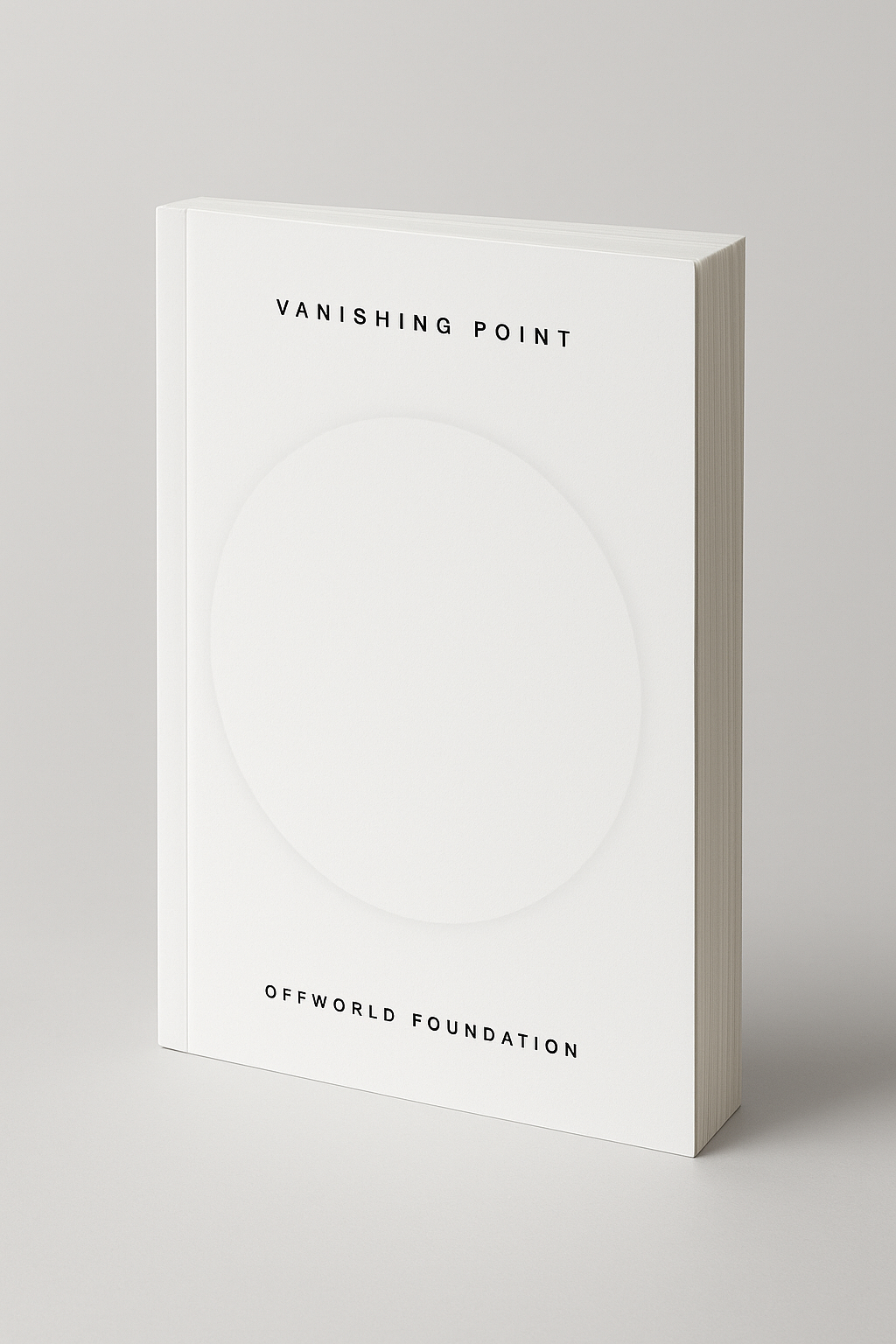




Vanishing Point is an exploration of disappearance, charting its movements as a force that both dissolves and allows for persistence.
The first part, The Ava Interface, unfolds like a transmission. Ava is not a figure but an absence, a principle that destabilises and refuses definition. To read it is to survive within the fracture, to make sense of a presence that cannot be mapped.
The book’s appendix, The Sun Interface, documents what remained after the disappearance.
Together, these two parts form Vanishing Point: a space where absence creates room for presence, and where silence acts as an event horizon, a gravitational pull that reshapes the world.
For readers, they offer two interfaces. Enter them, and they alter how you move through image, loop and silence.

Vanishing Point
Publication date: Winter 2025
Format: Softcover
Size: 156 × 234 mm (6.14 × 9.21 in)
Length: 227 pages
€17
Keywords: aesthetics of distance, alien intimacy, attachment theory, awakening, boundary dissolution, cracked aura, disappearance studies, devotional burn, écriture féminine, entanglement, infinity, language collapse, light implosion, memory without owner, radiant wound, sacred silence, solar excess, spectral narratology, the silent twin, theory-fiction, trauma